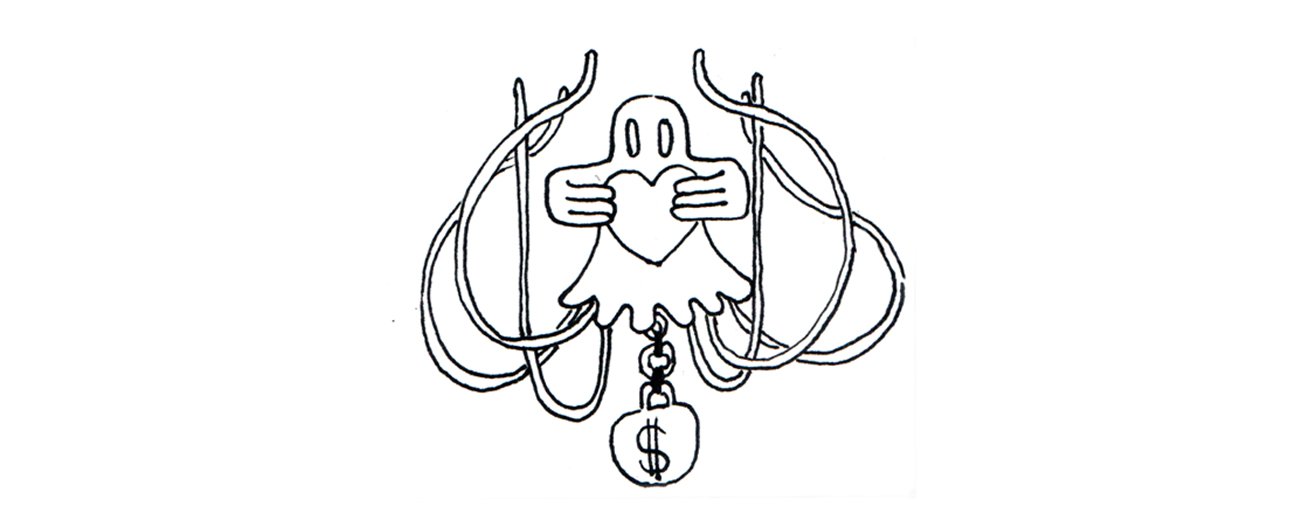Data Infrastructures of the Dead
BY TAMARA KNEESE (TEXT) & ÉMELINE BRULÉ (IMAGES)
My forthcoming book, Death Glitch, highlights the difficulties of handing down digital belongings from one generation to the next. Tangible heirlooms that one might inherit, like a grandmother’s brooch, are generally one-of-a-kind objects. They are marked by patina–or visible age–and the weight of historical, kin-based relationships. Digital remains, however, are composed of data and metadata, reproducible, tied to corporate platforms, and highly changeable.
People’s emotional investment in their digital possessions doesn’t guarantee their long-term survival. Beyond the conscious, curated profiles that people create, there are also the data traces that come from interacting with other people and systems – taking the subway, buying a cup of coffee, emailing a friend; digital objects are relational and metaphysical (Hui 2016).
Given these interdependencies, people and platforms must work together to care for the data of the dead. Building on work by feminist STS scholars of care and infrastructure (Forlano 2017, Gál 2020, Mattern 2018, Star 1999), death, I argue, is a point of breakdown that exposes the entanglements behind digital content. The production and upkeep of digital remains relies upon human and non-human actors, from specific platforms’ terms of service, ephemeral operating systems, breakable devices, and servers to lurkers, commenters, mutuals, and surviving loved ones.
Here, we provide a brief media archaeology: What relational infrastructures make digital posterity possible?
The Physical Infrastructure
Despite the ethereal metaphor of cloud computing (Hu 2015; Peters 2015), internet infrastructures, and thus the data of the dead, rely on fiber optic cables under the ocean floor and physical servers scattered across the globe. Some scholars speculate that by the end of this century, the dead will outnumber the living on Facebook. The data centers needed to maintain the data of the dead consume massive amounts of energy, water, and other resources (Hogan 2015).
Platforms and Policies
Each platform, from Facebook and Twitter to LinkedIn and Google, has its own policies for how the digital belongings of the dead should be handled. Facebook, as one of the largest and oldest megaplatforms, codified its memorialization policy in 2009 and has made numerous updates to that initial policy to better accommodate user needs around death. Twitter said it would delete inactive accounts in 2019 to free up underutilized handles and cut down on bots, which prompted user outrage: the company had forgotten about the Twitter handles of the dead. Platforms and users are sometimes at odds over how the data of the dead should be handled.
Despite the concentration of major tech platforms in Silicon Valley, the data of the dead crosses borders. A gap exists between inheritance and digital privacy laws, which differ from country to country or even state to state, and the terms and conditions of corporate platforms.
Death Startups
To help preserve and pass on the data of the dead, a number of startup companies have attempted to fill this gap between the law and platform policy. Digital estate planning companies promise to gather passwords, final wishes, and information about various online accounts, encompassing digital assets of both affective and monetary value, and bequeath them to designated loved ones. Death startup founders seek to innovate inheritance and update legacy institutions. As one of my research subjects put it, “investors say the most boring industries are the most lucrative.” But in reality, the majority of such startups survive only a few years, at most, and are unable to be transgenerational data brokers. Most of the startups I researched from 2008-2016 are gone. Digital death startups have shorter lifespans than most humans.
Institutions
Because of platform and web ephemerality, institutions are invaluable to the long-term preservation of digital remains. Since 1996, the Internet Archive has been on a mission to preserve the entire internet through web crawls, the Wayback Machine, and the organization’s many other digitization projects.
The Internet Archive’s preservation work has an uncanny side effect: by resurrecting long dead platforms and forgotten exchanges, dead people, along with dead links, can appear to live again. For example, Google software engineer Paul Lindner’s wife Julie Lindner died in 2019 and he used the Wayback Machine to revive her presence on Usenet and other defunct websites, stitching these digital memories together as a scrapbook.
Caregivers and Maintainers
Digital remains are intimately connected to reproductive and domestic labor. For example, with illness blogs, those closest to a terminally ill person may post messages dictated by the sick person who cannot type, or upload goodbye messages for the dying person. In some cases, caregivers take on editorial work, correcting typos to better reflect the person’s voice. This digital caregiving work is often done alongside changing bandages or colostomy bags, cooking or doing dishes, caring for children, and providing emotional support.
I interviewed the mourning loved ones of prominent, deceased illness bloggers. Mourners sift through or throw away physical photographs, clothes, and records while also sorting out plans for laptops and old files on top of making burial arrangements. But digital belongings require additional layers of care because they depend on platform infrastructures. Someone must pay for domain names, remove spam messages, and keep track of accounts; such processes cannot be fully automated. Interlocutors told me about replying to emails from new blog readers and keeping their dead loved ones’ social media pages up to date. The body, or really many bodies, both living and dead, are always behind the screen.
References
Forlano, Laura. “Data Rituals in Intimate Infrastructures: Crip Time and the Disabled Cyborg Body as an Epistemic Site of Feminist Science.” Catalyst: Feminism, Theory, Technoscience, 3(2) 2017, Science Out of Feminist Theory Part 2: Remaking Science(s). https://catalystjournal.org/index.php/catalyst/article/view/28843.
Gál, Réka. “Climate Change, COVID-19, and the Space Cabin: A Politics of Care in the Shadow of Space Colonization.” xtro realm / Climate Imaginary Reader, October 2020, http://mezosfera.org/climate-change-covid-19-and-the-space-cabin-a-politics-of-care-in-the-shadow-of-space-colonization/.
Hogan, Mél. “Facebook Data Storage Centers as the Archive’s Underbelly.” Television & New Media, 16 (1), 2015, pp. 3–18.
Hu, Tung-Hui. A Prehistory of the Cloud. Cambridge, MA: MIT Press, 2015.
Hui, Yuk. On the Existence of Digital Objects. Minneapolis: University of Minnesota Press, 2016.
Mattern, Shannon. “Maintenance and Care.” Places Journal, November 2018, https://placesjournal.org/article/maintenance-and-care/?cn-reloaded=1.
Peters, John Durham. The Marvelous Clouds. Chicago: University of Chicago Press, 2015.
Star, Susan Leigh. ‘“The Ethnography of Infrastructure.” American Behavioral Scientist, 43(3), 1999, pp. 377–391.
Tamara Kneese is Director of Developer Engagement at Intel where she researches green software practices. Previously, she was Assistant Professor of Media Studies and Director of Gender and Sexualities Studies at the University of San Francisco. She holds a PhD in Media, Culture, and Communication from NYU. Her work has appeared in Social Text, Cultural Studies; Media, Culture & Society; and Social Media + Society as well as in popular outlets such as The Atlantic, Slate, and The Los Angeles Review of Books. Her first book, Death Glitch: How Techno-Solutionism Fails Us in This Life and Beyond, is forthcoming from Yale University Press. She is the co-editor of The New Death (School for Advanced Research/University of New Mexico Press, 2022).
Émeline Brulé is a designer and a Human-Computer Interaction researcher at University of Sussex, focusing on digital inequalities.






